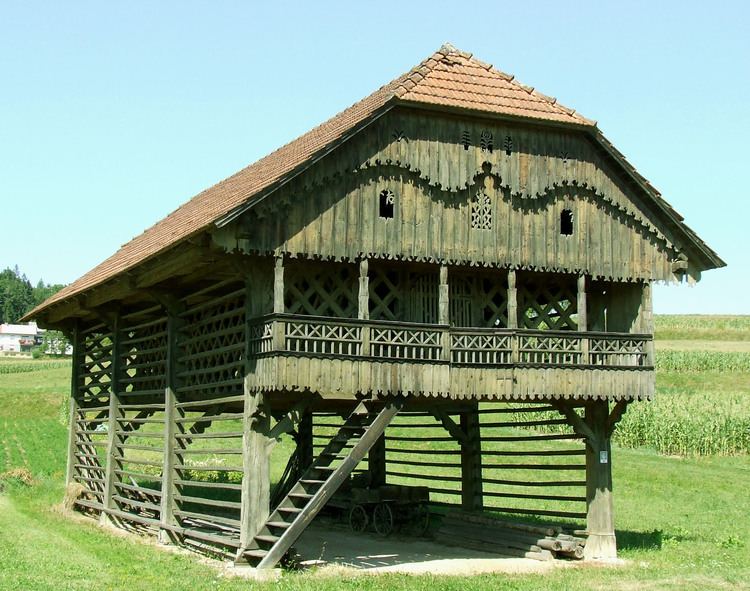 | ||
Similar Lake Bohinj, Freilichtmuseum Rogatec, Triglav National Park, Lake Cerknica, Bogenšperk Castle | ||
A hayrack (Slovene: kozolec) is a freestanding vertical drying rack found chiefly in Slovenia. Hayracks are permanent structures, primarily made of wood, upon which fodder for animals is dried, although their use is not limited to drying hay. Other food stuffs such as field maize are dried on them as well. Although it is a practical structure, a hayrack is often artistically designed and handcrafted and is regarded by Slovenes as a distinctive form of vernacular architecture that marks Slovene identity.
Contents
Distribution
The hayrack can be found throughout Slovenia except in the Prekmurje region, eastern Styria and the Slovenian Littoral. About 80% of all hayracks can be found in Slovenia. Similar structures can also be found in Friuli in Italy and in the East Tyrol region of Austria. In German, it is called Harpfe or Köse.
Names and typology
Slovenian names for the hayrack include kozolec and kazuc (colloquial, usually referring to a single straight-line hayrack), stog (commonly found in Upper Carniola and especially in the area around Studor in the Bohinj region), and toplar. Both kozolec and kozuc are probably diminutive forms of kozel 'goat', referring to a branching structure used for holding and drying hay or grain (cf. the similarly motivated German Sägebock and U.S. English sawbuck). The word stog also refers to a haystack and is derived from Common Slavic stogъ 'stack, heap'. The word toplar (or doplar) is borrowed from Austrian German Doppler, referring to a double structure in general.
Specific varieties of hayrack include:
Open-air museum
From 2010 until 2013, the Municipality of Šentrupert in southeastern Slovenia built the first ever open-air museum "Land of Hayracks" (slovene: Dežela kozolcev) in the southern part of Šentrupert, its administrative centre. The collection includes 19 hay drying devices, which includes 17 hayracks, with the oldest from 1795, and presents all types of hayracks. The museum also serves as a venue for events. The main organiser of the project was Rupert Gole, the mayor of Šentrupert. Over 650 hayracks have been counted in the Mirna Valley, where the settlement lies. The largest of them and in the entire country is the Simončič Hayrack.
